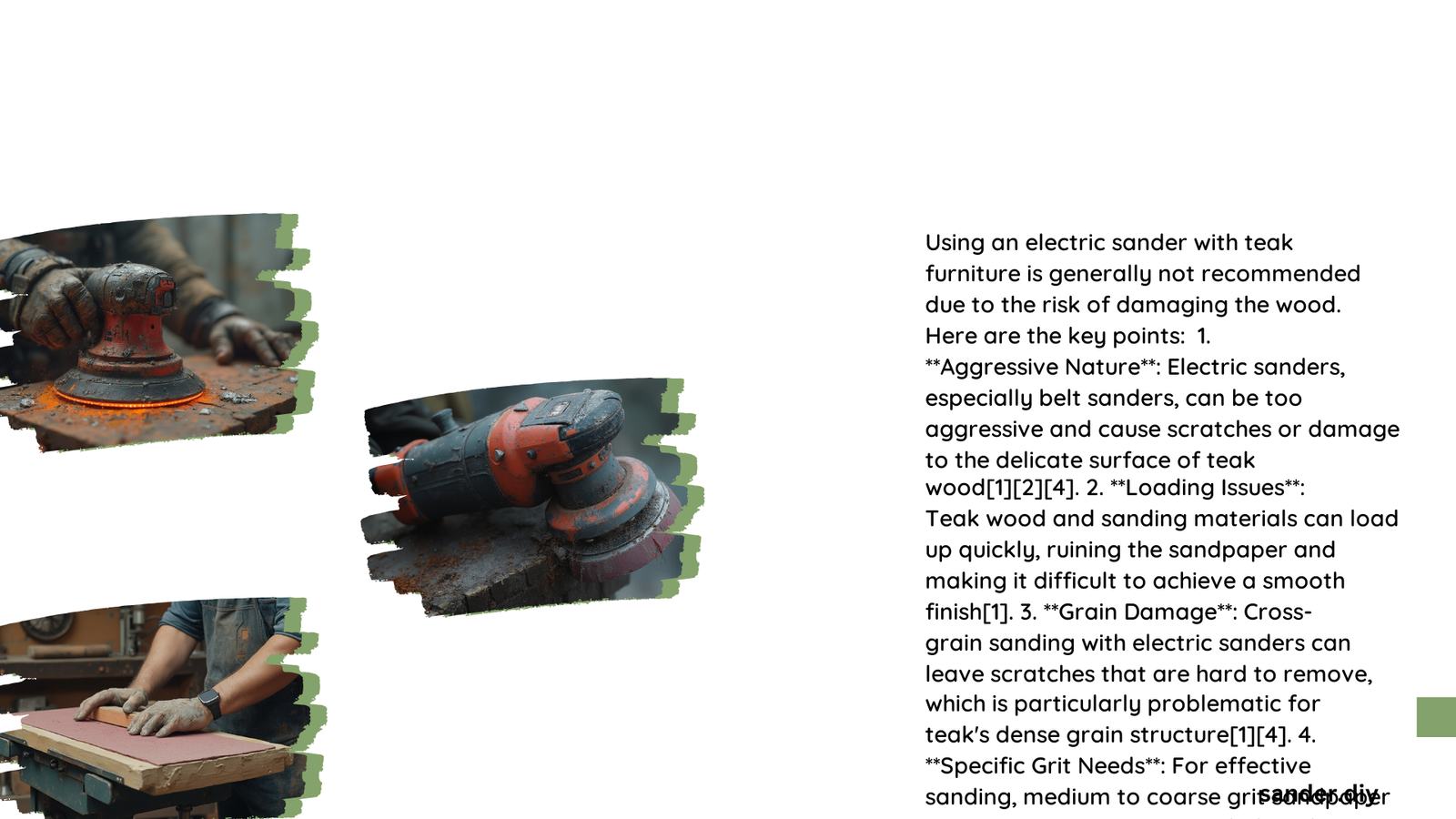Teak furniture demands precision and care during refinishing. Electric sanders can be powerful tools for transforming weathered teak surfaces, but selecting the right sander and technique is crucial. Understanding the unique characteristics of teak wood, such as its dense grain and natural oil content, will help you determine the most effective sanding approach for maintaining the wood’s integrity and beauty.
What Makes Teak Wood Unique?
Teak is renowned for its exceptional durability and natural resistance to environmental factors. Its high oil content and tight grain structure require specialized handling during refinishing processes. When considering whether to use an electric sander with teak furniture, several critical factors come into play:
Why Choose an Electric Sander?
| Sander Type | Pros | Cons |
|---|---|---|
| Random Orbital Sander | – Minimal surface scratching – Versatile grit options – Smooth finish |
– Higher cost – Requires skill |
| Belt Sander | – Rapid material removal – Powerful |
– Risk of aggressive sanding – Potential wood damage |
What Are the Best Techniques for Sanding Teak?
- Grit Progression Strategy
- Begin with 80-100 grit for initial surface preparation
- Move to 120-150 grit for smoothing
-
Finish with 220-240 grit for polished surface
-
Grain Alignment Techniques
- Always sand parallel to wood grain
- Use gentle, consistent pressure
- Avoid circular motions that create cross-grain scratches
How to Select the Right Electric Sander?

Recommended Sanders for Teak
- DeWalt D26451K Random Orbital Sander
- 3.0 AMP motor
- Variable speed control (7,000 – 12,000 OPM)
-
Lightweight design (3.9 lbs)
-
Makita 3″ x 24″ Belt Sander
- 6.0 AMP motor
- Powerful material removal
- Best for initial rough sanding
What Challenges Might You Encounter?
Teak presents unique challenges during sanding:
– High natural oil content
– Dense, irregular grain patterns
– Potential for uneven surface absorption
Preparation Checklist
- Ensure wood is completely dry
- Remove existing finishes
- Clean surface thoroughly
- Use dust extraction system
- Wear protective equipment
Cost Considerations
Electric Sander Investment:
– Random Orbital Sanders: $50 – $200
– Belt Sanders: $70 – $300
– Sandpaper: $5 – $20 per pack
Professional Tips for Success
- Work in well-ventilated areas
- Use progressive sanding techniques
- Monitor wood surface closely
- Apply appropriate wood sealant after sanding
When to Seek Professional Help
Consider professional restoration if:
– Furniture has significant historical value
– Extensive damage is present
– You lack confidence in sanding techniques
Final Recommendations
An electric sander can be an excellent tool for teak furniture when used correctly. Random orbital sanders offer the most controlled and professional results. Prioritize technique over power, and always respect the wood’s natural characteristics.
Key Takeaways
- Choose the right sander for your specific project
- Follow proper grit progression
- Maintain consistent technique
- Protect the wood’s natural beauty
Reference:
– The Best Sanders for Wood and When to Use Them
– 6 Types of Power Sanders – The Spruce
– How to Choose the Best Sander for Furniture Projects
